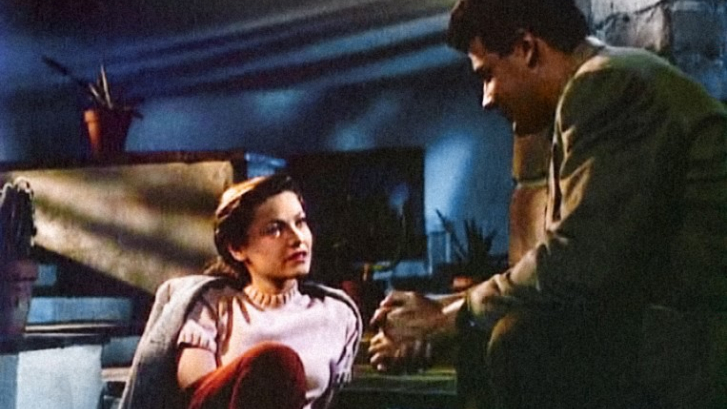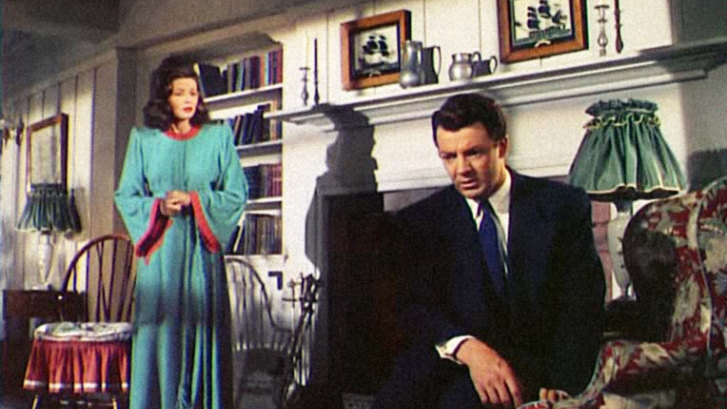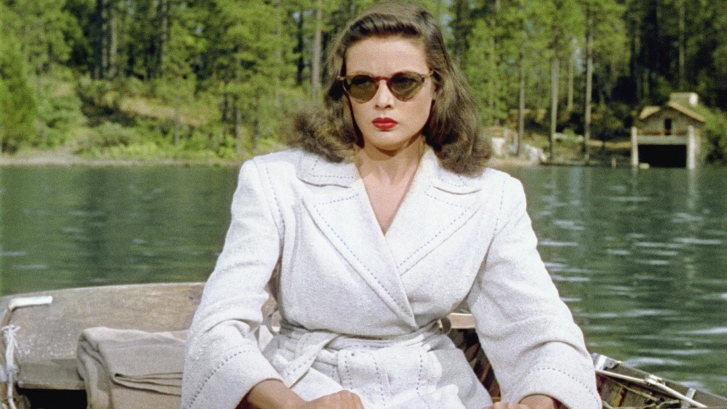Leave Her to Heaven

On a visit to friends in New Mexico, writer Richard Harland is introduced to beautiful, headstrong socialite Ellen Berent, who he has met on the train. He finally succumbs to her desire to marry him. But Ellen’s possessiveness puts a crimp in their life, as she begrudges the attention Richard shows his disabled brother and even her own sister, Ruth. As Ellen’s jealousy turns pathological, she accuses her husband of being in love with Ruth. Ellen wants Richard all to herself and she’ll stop at nothing to achieve that end … Arguably the first film noir made in colour. Film professor Scott Higgins described the hapless hero as “chromatically overwhelmed” upon first seeing Ellen on a train; her aqua eyes perfectly match the train’s decor, awakening Richard’s cravings. Later, he will be surrounded by the same colour in the courtroom. The Technicolor camerawork does a masterly job of stoking the tension between the overt and the subtext. White robes are an early warning sign of Ellen’s chilling iciness, while the red of her lips signalizes her erotic abandon. Douglas Sirk was influenced by the film, Martin Scorsese is a fan, and echoes of it can be seen in Todd Haynes’ Far from Heaven.
details
-
Runtime
110 min -
Country
United States -
Year of Presentation
2015 -
Year of Production
1945 -
Director
John M. Stahl -
Cast
Gene Tierney, Cornel Wilde, Jeanne Crain -
Production Company
-
Berlinale Section
Retrospective -
Berlinale Category
Feature Film
pictures from the movie
Biography John M. Stahl
John M. Stahl (January 21, 1886 - January 12, 1950) was born Jacob Morris Strelitsky in Azerbaijan to an eastern European Jewish family. When he was a child, his family left the Russian Empire and moved to the United States, settling in New York City. At a young age, Strelitsky began working in the city's growing motion picture industry and directed his first silent film in 1914. He took the name John Malcolm Stahl and in the early 1920s, signed on with Louis B. Mayer Pictures in Hollywood. In 1924 he was part of the Mayer team that founded MGM Studios. John Stahl continued to produce and direct major productions as well as filler shorts up to the time of his death.
source: wikipedia.org
Filmography John M. Stahl
1932 Back Street | 1934 Imitation of Life | 1935 Magnificent Obsession | 1939 When Tomorrow Comes | 1943 Holy Matrimony | 1944 The Keys of the Kingdom | 1948 The Walls of Jericho

